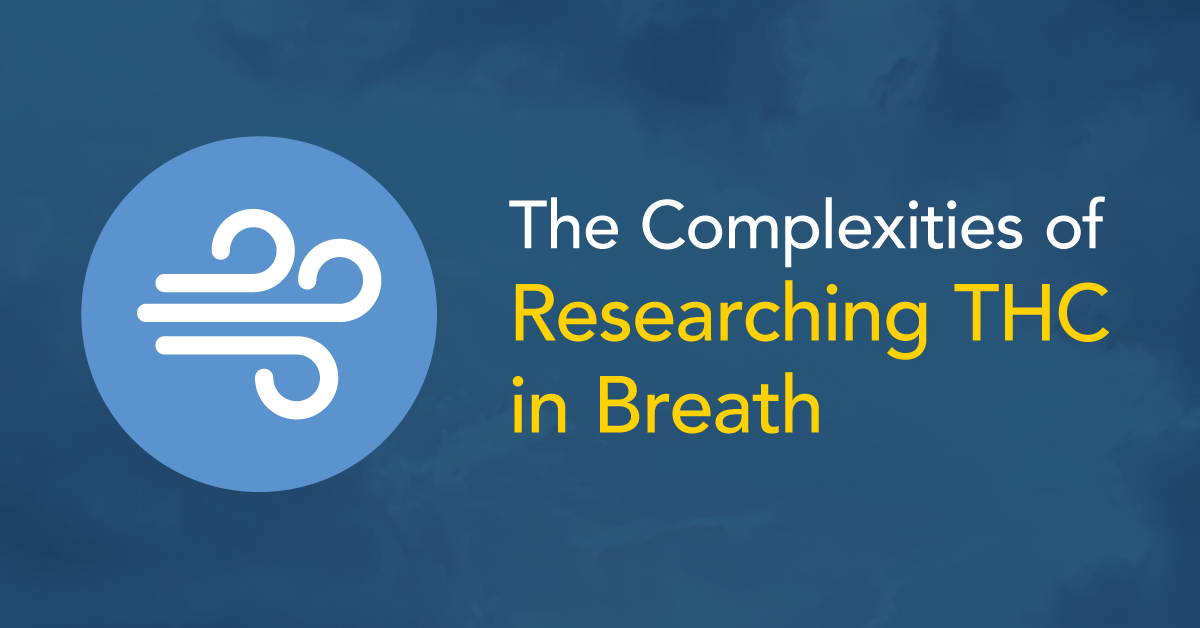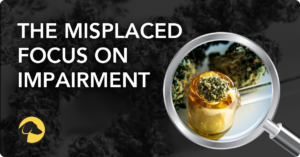
Approximately How Many Different Substances Does Human Breath Contain?
I have dedicated my first two blogs to the challenges of developing a cannabis breathalyzer (part I and part II) but now want to shift to share the complexities we faced while researching breath. My next blog will cover a related topic – the importance of conducting research that involves testing with human subjects.
RESEARCHING BREATH CREATED ITS OWN CHALLENGES
Since founding Hound Labs, Inc. in 2014, I have worked with our scientific team to prioritize “R&D” (research and development) to solve the challenges of accurately and reliably detecting THC1 in breath. Achieving our goal required more than investing tens of millions of dollars – it also required hiring very smart and creative scientists to navigate a myriad of hurdles. One of the main challenges our team faced while bringing a portable cannabis breathalyzer to market is the innate complexity of human breath.
Let’s start with a quick trivia question:
Q: Approximately how many different substances does each exhaled human breath contain?
A: a) 50
b) 500
c) 1,000
d) 2,500
e) >3,000
The correct answer is “e” – every time humans exhale, their breath contains more than 3,500 different components!2 In addition, the combination of components in breath varies from person to person. For example, one of my breaths will contain a different combination of components than the combination in my wife’s breath, or my daughters’, or my sons’. There is a prevailing theory that each person’s breath is so totally unique that it is like a fingerprint – an idea that has fascinated medical researchers and physicians for years. However, breath research has been slow to advance because there has not been a cost-effective and easy-to-use technology to conduct the necessary research with human subjects. That is, until now – with the advent of the Hound® ultra-sensitive breath technology.
RESEARCHING THC ALSO POSED CHALLENGES
When we started Hound Labs, Inc., we were singularly focused on developing a new ultra-sensitive technology that would identify only one of the ~3,500 substances in human breath – THC (the psychoactive ingredient in cannabis). As it turns out, targeting just one type of molecule in breath was made even more difficult by the unique characteristics of THC. Measuring THC is one of the most demanding scientific challenges because not only do THC molecules degrade very quickly in breath (they remain detectable for only a few hours), but they also appear in very, very low concentrations – parts per trillion (1,000,000,000,000). For perspective, there is a much higher concentration of alcohol in breath – parts per thousand (1,000). So, any technology that the Hound Labs R&D team developed would need to be ultra-sensitive – 1 billion times more sensitive than an alcohol breathalyzer.
TARGETING ONLY THE THC MOLECULE CAUSED ADDITIONAL CHALLENGES BUT ALSO ENSURED SUCCESS
When Colorado and Washington legalized recreational cannabis in 2012, I realized that there would be a need for a cannabis breathalyzer that measured only active THC3 that correlates with the window of impairment.4 Because we started Hound Labs with the goal of measuring only one type of molecule in breath – THC – we were also able to build a breath technology that was extremely specific. That is because THC has a distinct molecular structure, differentiating it from the structure of any other molecule in breath.5 This specificity means that our breath technology has been designed to target one specific molecule at a time – dramatically reducing the potential for cross-reactivity with the other substances in breath.
So, our scientific challenges were clear – identify one type of molecule (of the ~ 3,500 in breath) that degrades quickly and that appears in parts per trillion. It is no wonder that there were a few skeptics who believed it was an insurmountable scientific challenge. Fortunately, our team was up to the task and after years of research combined with lots of creativity and some stubbornness, we ultimately succeeded. We proved that the breath technology that we needed to enable a cannabis breathalyzer to measure one specific substance (THC) accurately and effectively in breath would require the ultra-sensitivity to measure concentrations as low as <3 pg/L6 breath.
A NEW CHAPTER IN THE SCIENCE OF BREATH
Although our initial goal was to develop an ultra-sensitive technology to measure THC in breath, the result was a technology that has a wide range of other applications. Our scientists developed the Hound® breath technology in such a way that it only targets and measures one explicit type of molecule at a time, but the target can be changed. For example, the HOUND® CANNABIS BREATHALYZER only measures THC and the HOUND® COVID-19 BREATHALYZER only measures the Covid-19 molecule. The fact that we decided to measure one of the most “difficult” molecules enables us to measure so many other substances in breath that appear in higher concentrations and do not degrade as quickly. Ultimately, the sensitivity and specificity of our breath technology allows us to successfully measure THC in breath. The sensitivity and specificity are also why we were the first to measure the Covid-19 molecule in breath – months before the World Health Organization (WHO) and the Centers for Disease Control and Prevention (CDC) acknowledged that Covid-19 was aerosolized and could be found in breath.
As a physician, I am very excited about the underlying technology in the HOUND® CANNABIS BREATHALYZER because it is cost effective, portable, and will be a fairer cannabis test for employers and employees. I am also very excited about our ultra-sensitive technology because it will start a new chapter in the field of breath science, enabling the detection of pathogens, illness, and many other substances. We have only begun tapping its potential.
Footnotes
1 Δ-9-tetrahydrocannabinol or Δ-9-THC is the primary psychoactive ingredient in cannabis.
2 Human exhaled breath analysis, Annals of Allergy, Asthma, & Immunology, Volume 106, Issue 6, June 2011, pages 451-456.
3 “Active THC” isn’t a scientific term, but the term is frequently used to help readers distinguish between inactive metabolites that do correlate with impairment.
4 https://houndlabs.com/wp-content/uploads/2020/12/drugshumanperformfs.pdf
5 As an example, the THC metabolite 11-nor-9-carboxy-tetrahydrocannabinol has a different structure (THC-COOH).
6 3 pg/L = 3 picograms/Liter. One picogram (pg) = one 1-trillionth.

August 26, 2021
By MIKE LYNN, MD
CO-FOUNDER
Share












